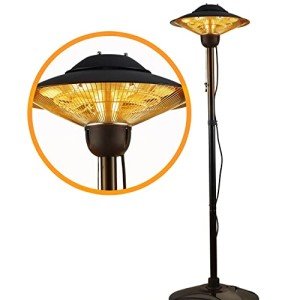How to Choose a Patio Heat Lamp Electric
There are a variety of options when it comes to heating your patio. In contrast to propane models that require refills, electric heaters can deliver instant heat by simply flicking the switch or pressing a button.
They also don't emit gases that could pose a health risk. Some models have adjustable temperature settings for different distances.
Type of Heater
You can relax in your outdoor living space throughout the day and throughout the seasons by using the right patio heater. are electric patio heaters any good are available in many varieties including freestanding propane models, natural gas models, as well as ceiling or wall-mounted electric radiant heaters. The choice you make will depend on the size of your patio, your power source and individual preferences.
Most patio heaters are powered by electricity or natural or liquid gas and emit heat in convection and radiant heating. Their heat output is measured in watts and can be converted to British thermal units (BTUs) for comparison. Some also have adjustable heat settings to allow for greater flexibility.

Patio heat lamps combine a burner mounted on a pole, and an aperforated screen that reflects flames and sends heat downwards to warm people, objects and furniture. Some patio heat lamps come with reflective reflectors over the burner and can be silvered in order to reduce the amount that heat is lost upwards.
The most popular kind of patio heater that is a gas patio heater is usually found in outdoor seating areas of bars and restaurants since they generate lots of heat quickly and distribute equally across all directions. They are great for warming tables. These heaters are portable and run off the propane tank or plugged into your natural gas line, with the latter offering greater convenience and lower initial cost of installation, but they require ongoing expenses for fuel.
Gas patio heaters are becoming more popular as more homes have natural gas lines. They are simple to install, but they require an appropriate gas line properly installed and functioning to be secure. There are portable natural gas heaters with extension hoses that assist in overcoming this limitation however they can also create a tripping hazard and a fire risk when not in use.
Safety
Electric patio heaters are safe to use in covered areas, as they permit heat to radiate upwards and not outwards. However, they're not meant to be used under an open roof. The heater must be installed at minimum 18" from adjacent walls or 6" from the ceiling to avoid fire hazards.
Patio heaters made of propane and gas are generally only safe to install in enclosed areas that have a durable cover that is specifically designed for use in open air. These covers are typically made from fire-resistant canvas and have the option of having a roof that is closed. The safety concerns associated with these kinds of outdoor patio heaters is due to the flame and fumes they emit. They should be located away from flammable objects, such as chairs and curtains.
Follow the instructions and safety measures of the manufacturer when installing a patio heater or heat lamp. Choose a model that has received UL and CSA safety certifications. Also, be sure to read the owner's instruction manual thoroughly. Make sure the heater is out of the reach of pets and children. Some free-standing patio heating devices like EUROM's have an automatic tipping safety that shuts the device off if it falls.
If your patio heater is connected to a natural-gas line, you must be sure to check the condition of the line regularly and test it by a qualified professional for leaks. If the line needs to be replaced, make sure to hire an authorized plumber. A professional is able to determine if the line needs to be run through an underground pipe or not. A professional will also be able to ensure that the heater for your patio is plugged in to an outlet that is GFCI-rated (ground fault circuit interruptioner) to safeguard against electric fires and shocks.
Installation
The the height at which a patio heater is positioned determines the amount of heat it can radiate into the area. The heater should be placed away from surfaces like plastic and wood that may deform. Depending on the heater model you may choose to place it on a wall or structure using conventional mounting brackets. Some models feature soft starters that reduces the current at the highest level to safeguard your circuits.
